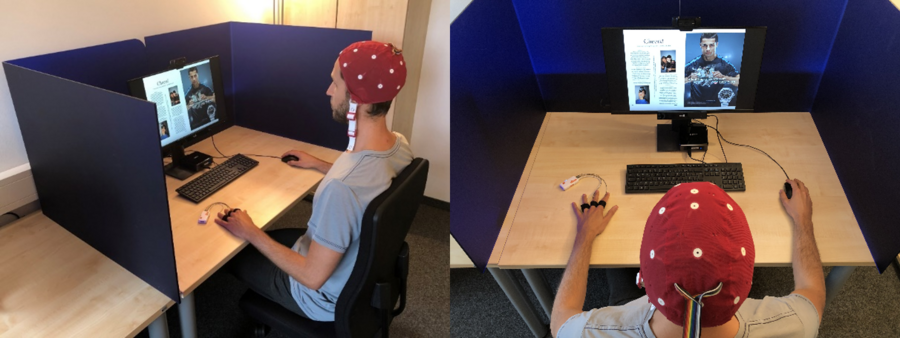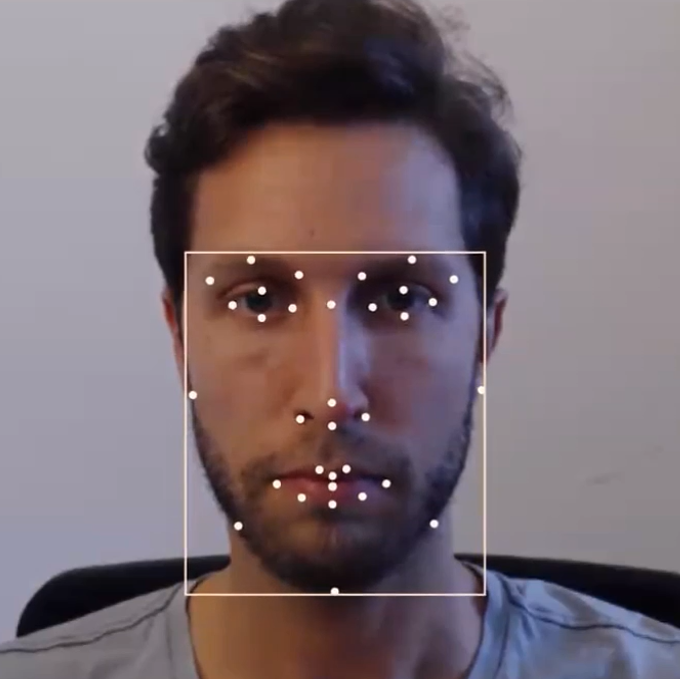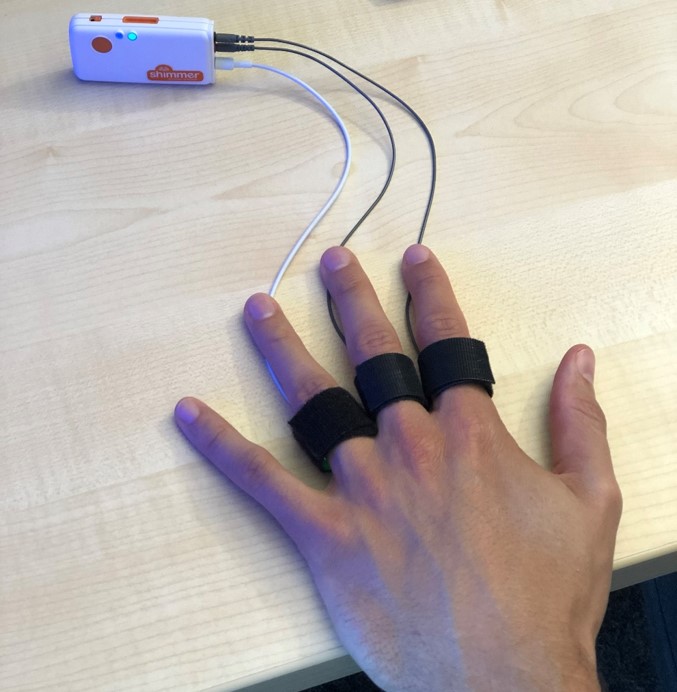Tracking consumer behaviour with state-of-the-art methods
At the Schumpeter School, we have one of the most modern brand research laboratories in the world. It offers excellent conditions for holistic research into the emotional and cognitive effects of brands and their communication. A wide range of research questions in the context of Bachelor's, Master's and doctoral theses can be answered here using state-of-the-art scientific methods.
(Kopie 1)

Place of the test person (test person still without EEG wiring)
Source: Chair of Marketing, BUW
Comprehensive equipment
By simultaneously recording visual stimulus perception (cause) and physiological consumer reactions (effects), the emotional and cognitive effects triggered by each fixation can be assigned. The emotional brand effects are recorded by measuring activation (emotional intensity) using skin conductance resistance and facial muscle activity (emotional quality). The cognitive brand effects are measured by the electroencephalogram (EEG), among other things.
An overview of the individual measurement methods used in our laboratory:
Recording visual stimulus perception through eye tracking
The measurement of the eye movement is used to analyse the establishment of contact and the absorption of information. In addition to identifying the fixated areas, it is also possible to measure the duration and sequence of fixations. Our various eye trackers allow both stationary gaze recording on a screen, smartphone or tablet, as well as mobile recording of gaze behaviour, for example in shopping situations or in the test subjects' everyday media consumption.
(Kopie 2)

Stationary (left) and mobile (right) eye tracker
Source: Chair of Marketing, BUW
Measuring the quality of emotions with Affectiva Facial Expression
Measuring facial muscle activity makes it possible to determine the quality of emotions. Analysing the facial expressions of the test subjects allows conclusions to be drawn about the valence of the emotions felt (pleasant vs. unpleasant) as well as the identification of specific emotions such as joy, disgust or surprise.
(Kopie 3)

Analysis points for recognising facial muscle activity
Source: Chair of Marketing, BUW
Measuring activation through Galvanic Skin Response (GSR) and Heart Rate Capture
Skin conductance and heart rate are used to determine the consumer activation triggered by a stimulus and therefore also allow conclusions to be drawn about the intensity of the emotions felt.
(Kopie 4)

Sensors for recording skin conductivity
Source: Chair of Marketing, BUW
Recording cognitive brain activity using the electroencephalogram (EEG)
The measurement of brain activity using EEG is used to analyse cognitive and emotional processing. In addition to identifying the activated areas of the brain (emotional vs. rational), it is also possible to determine the depth of processing of the information received.
(Kopie 5)

EEG cap with 20 electrodes for measuring brain activity (without wiring the test person)
Source: Chair of Marketing, BUW
Brand and communication analysis in the research laboratory
A typical brand communication analysis illustrates the analysis possibilities of our laboratory: while the test person reads an e-paper on the screen, the eye movement, facial muscle activity and skin conductivity are measured. By analysing the eye movement, it is possible to determine which editorial section and which advertisements are viewed by the test person, for how long and in what order. Measuring facial muscle activity and skin conductance makes it possible to record the intensity, valence and quality of emotions triggered by the respective areas. The whole process can also be coupled with the EEG, which also makes it possible to analyse neuronal activity.
(Kopie 6)

Heat map for visualising gaze behaviour (left; the redder the more fixations) and display of the triggered emotion intensity, valence and quality on the screen of the experiment leader
Source: Chair of Marketing, BUW
The measurements described can be used, for example, to determine whether and to what extent a brand advertisement is effective.

